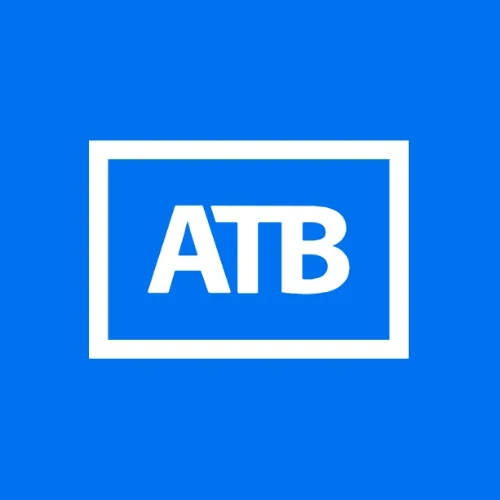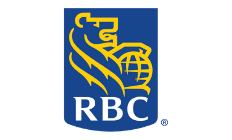If you need a personal loan, your first port of call will probably be your bank. It’s quick and easy to apply for a loan if you’re already a customer, and bank personal loans offer low rates and large loan amounts for people with good to excellent credit. Just be aware that banks have strict loan eligibility criteria, so you won’t be able to qualify if you have bad credit.
First, why get a personal loan from a bank?
The following are some of the main advantages of taking out a personal loan from your bank:
- Competitive rates. Banks usually offer competitive interest rates if you have good or excellent credit.
- Easy to apply. If you’re an existing customer, you can easily apply for a loan online, in person or over the phone. Your bank may also be able to use your bank account activity to verify your income and expenses, perhaps requiring less documentation when applying for your loan.
- Easy to manage. As an existing customer, you can manage all your finances in one place.
- Larger amounts. Banks tend to offer larger loan amounts than non-traditional lenders, while loan terms typically range from one to five years.
- Perks. Banks sometimes offer perks – like fee reductions – for bundling multiple financial products together.
- Deal with a provider you trust. When you get a bank personal loan, you get the peace of mind of dealing with an established and trusted financial institution.
Compare bank personal loans in Canada
| Lender | Loan amount | Loan term | Interest rate | |
|---|---|---|---|---|
 | Not disclosed | 1 - 5 years | 7.20% - 14.20% | |
 | $5,000–$50,000 | 1 - 7 years | Not disclosed | Read review |
 | Not disclosed | 1 - 5 years | Not disclosed | Read review |
 | $3,000 to $200,000 | 1 - 5 years | Not disclosed | Read review |
 | $2,000+ | 1 - 5 years | Not disclosed | |
 | Not disclosed | Up to 5 years | Not disclosed | Read review |
Finder survey: How old are people who rate lender reputation as an important factor when applying for a personal loan?
| Response | Gen Z | Gen Y | Gen X | Baby Boomers |
|---|---|---|---|---|
| Reputable lender | 23.43% | 19.43% | 21.55% | 31.78% |
How to get a bank personal loan in Canada
Here’s what you need to do to apply for a personal loan from a bank:
1. Fill out an application.
You can apply online, over the phone or at a branch. You’ll need to provide your personal details, contact information, income and employment details, and your desired loan amount. If you’re already a bank customer, they’ll already have your personal details on file to speed up the application process.
2. Get a response.
The bank will contact you within 48 hours to organize the next steps.
3. Meet with a loan specialist.
You’ll need to have an interview with a loan specialist either in person or over the phone. Though you may not be asked for all of these, have the following documents ready to ensure the process runs smoothly:
- Two pieces of ID
- Employer letter
- Recent pay stubs
- Notice of assessment (this is preferred over T4 slips)
- T4 slip
- Income tax return (T1 General)
- List of assets and liabilities
4. Get an offer.
Getting an offer can take a few days to a few weeks because the loan underwriter will need time to assess your application. Getting a personal loan that involves collateral, such as your house, will take longer than getting a loan with no collateral.
5. Sign the contract.
Review the loan contract carefully. Take into account your payment schedule and the loan’s overall cost, then sign on the dotted line.
6. Get funded.
Once the paperwork is complete, the loan funds will be deposited directly into your bank account within a business day or two.
What are the eligibility requirements for bank personal loans?
If you want to get a personal loan from a bank, you’ll need to meet the following requirements:
- Be the age of majority in your province.
- Have a credit score over 660-680.
- Have a stable income.
- Must not have been declined credit by the bank in the last six months.
- Must not have declared bankruptcy in the last seven years.
If you don’t qualify, you may want to consider applying for a personal loan from a credit union, online lender or P2P lender.
What types of personal loans can I get from a bank?
There are a few options to choose from when you apply for a bank personal loan in Canada:
- Secured personal loan. With a secured loan, you put up an asset you own as collateral. Common assets that banks accept include your home and liquid investments. Having collateral reduces the risk for banks, which means they can offer you lower interest rates and higher loan amounts. Registered investment accounts such as RRSPs cannot be used as collateral.
- Unsecured personal loan. Unsecured loans do not involve any collateral. Since unsecured loans are riskier for lenders, they typically have higher rates. Banks also usually impose stricter eligibility criteria for an unsecured loan.
- Debt consolidation loan. If you have a few separate loans or credit accounts – anything from credit card debt to a car loan – you might want to consolidate this debt into one loan. With a debt consolidation loan, you can pay off your other loans and combine your debt into one single loan, where you’ll only have to make one repayment. Another goal with debt consolidation is to try and secure lower rates and fees, so you pay less over the course of your loan. Learn more about the best debt consolidation loans.
Lines of credit
A line of credit is the most common consumer loan that banks offer in Canada. With a line of credit, you can withdraw a set amount of funds as you need to. The main difference between a line of credit and a personal loan is that you have ongoing access to a credit limit without a cut-off date. Usually, you do not pay any rates or fees on this service until you use it and the rates are only charged on the amount of money you actually withdraw, rather than the total amount available.What will increase my chances of getting approved by a bank?
Banks have stricter personal loan eligibility requirements than other lenders. Here are some of the key requirements that can help boost your chances of approval.
Debt-to-income (DTI) ratio under 40%
Your DTI reflects the percentage of your monthly income that goes towards paying off your existing debts. If your DTI ratio is less than 40%, your chances of getting approved increase.
Positive net worth
Your net worth is a figure that expresses your assets vs your debts. If you have a positive net worth – i.e. you own more than you owe – and if your net worth is higher than the loan amount you’re applying for, you’re more likely to get approved.
Stable employment history
If you’ve been employed long term in a salaried position, you’re more likely to get approved than someone who can only show a record of short-term contract employment. You’ll also be a more attractive prospect to the lender if you work for an established, well-known employer rather than a new startup.
No repeated credit inquiries
If you’ve got multiple inquiries on your credit file in a short amount of time, this will not only hurt your credit score but also make you look like a risky prospect in the eyes of a lender. That’s why it’s a good idea to keep credit applications to a minimum.
No late payments or collections
If you’ve had a previous debt sold to a collection agency or you’ve been late in making payments in the past, this makes you look like a high-risk borrower. If you need to be late with a debt payment, be proactive – let the creditor know in advance and discuss options with them. This may prevent a negative effect on your credit and also shows potential lenders that you handle your finances responsibly.
Providing collateral
If you provide collateral for a loan, for example if you use your investments or home, this reduces the level of risk for the bank. This increases your chances of approval and will also allow you to access higher loan amounts, but your collateral could be repossessed if you default on the loan.
Guarantor
A guarantor loan is co-signed by a third party who agrees to pay off the loan if you can no longer keep up with repayments. This type of loan may be an option if you need a bit of a boost to maximize your chances of approval, but if you have poor credit, even getting a guarantor won’t be enough to get approved by a bank.
Frequently asked questions
More guides on Finder
-
Compare short-term loans in Ontario
Compare short-term loans in Ontario. Apply online and get an instant decision.
-
Best online loans in Canada
Learn how to compare online loans and find the best rate and terms for your needs.
-
Family loans: How to borrow from and lend to your loved ones
Thinking of borrowing from family? Learn about the benefits, risks and possible tax issues — including tips to establish clear terms.
-
Compare direct private lenders for personal loans in Canada
Compare private loans in Canada including rates, fees, terms and more.
-
Compare personal loans in Nova Scotia
Compare personal loans in Nova Scotia for all credit scores.
-
Compare personal loans in Quebec
Learn about your options for personal loans in Quebec and how to choose the right one for your needs.
-
Best personal loans in Ottawa
Compare personal loans in Ottawa for good and bad credit scores.
-
How to choose a personal loan broker
Take the hassle and stress out of finding a loan by using a matching service like a personal loan broker.
-
Credit union loans
Find out the benefits and drawbacks of taking out a personal loan with a credit union.
